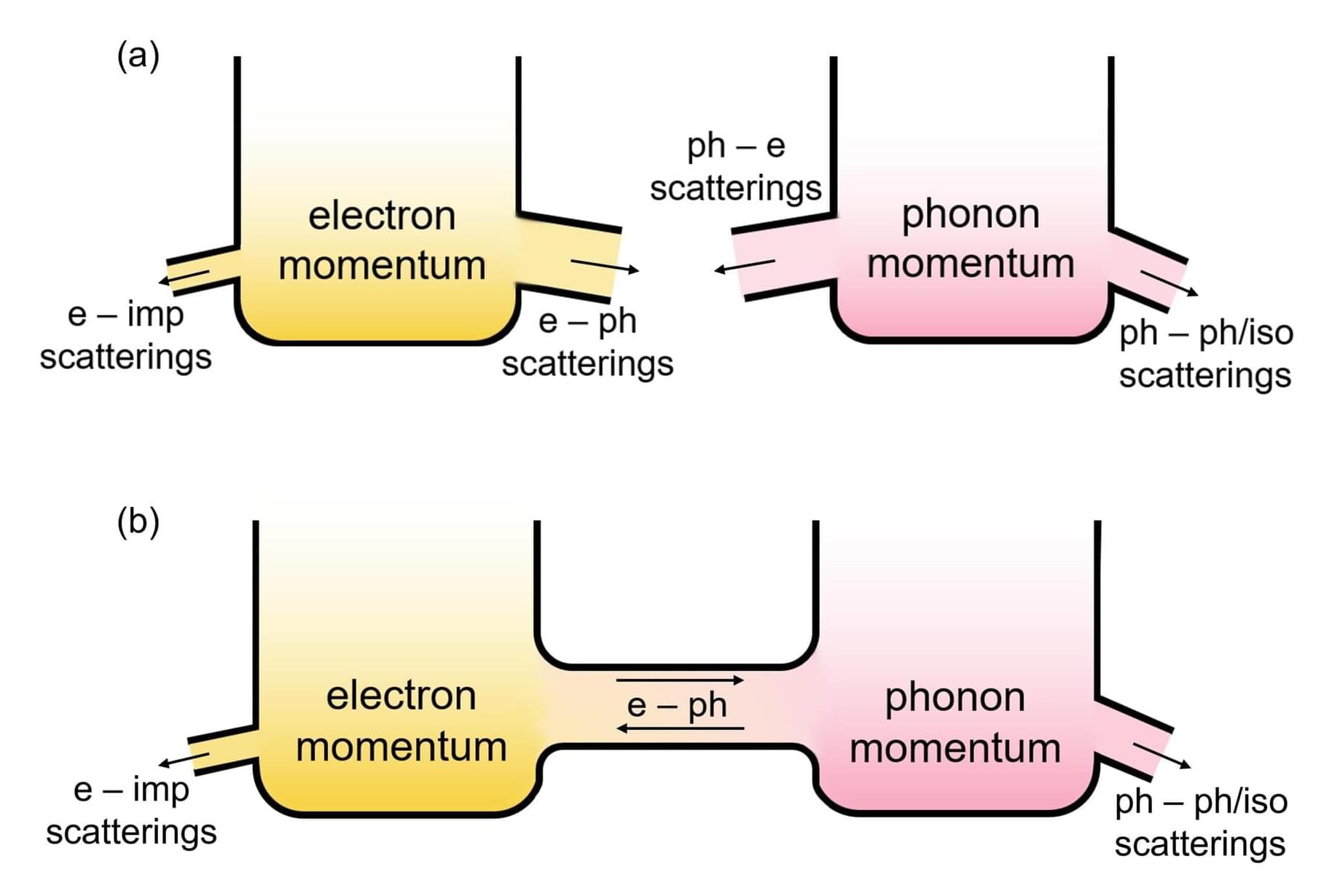A condition long considered to be unfavorable to electrical conduction in semiconductor materials may actually be beneficial in 2D semiconductors, according to new findings by UC Santa Barbara researchers published in the journal Physical Review Letters.
Electron-phonon interactions—collisions between charge-carrying electrons and heat-carrying vibrations in the atomic lattice of the material—are considered the primary cause of electrons slowing down as they travel through semiconductor material. But according to UCSB mechanical engineers Bolin Liao and Yujie Quan, when electrons and phonons are considered as a single system, these interactions in atomically thin material prove to actually conserve total momentum and energy, and could have important implications for 2D semiconductor design.
“This is in sharp contrast to three-dimensional systems where you have a lot of momentum loss processes,” said Liao, who specializes in thermal and energy science.
